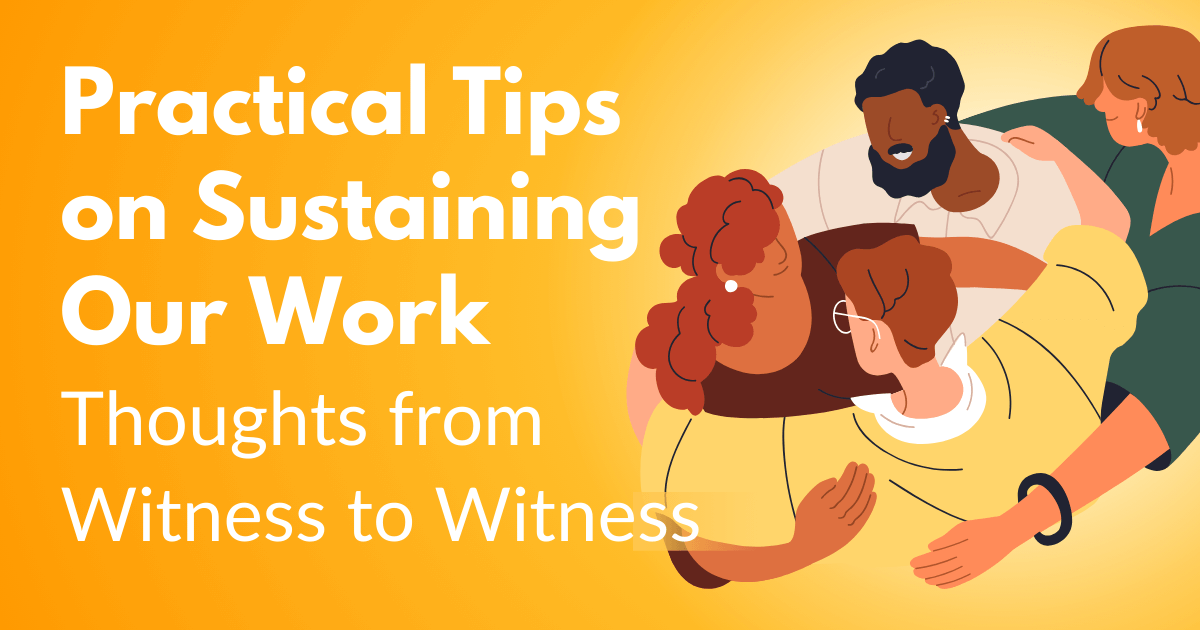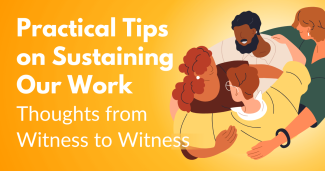Practical Tips on Sustaining Our Work: Thoughts from Witness to Witness

Most of us want to work at our best, enjoy the work we do, feel satisfied or gratified by it, and happily sustain our work over time. This is a stance shared by a wide range of professionals, including clinicians and farmworkers, two groups that Migrant Clinicians Network serves. Sadly, these intentions are often more aspirational than reality-based. Many factors make the jobs we do more demanding and less fulfilling than we desire. In this blog, I will discuss some of those factors and provide some suggestions that may help us create a more sustainable work practice.
- You may have heard about “chronotypes,” our internal biological clock that sets us to have optimal waking and sleeping times. The chronotype is our own personal biological rhythm. For a long time, research has demonstrated that there are early birds, morning larks, and night owls, those who feel most awake early in the day and those who have their most productive hours later in the day. These body clocks are inside virtually every cell in our body and control the felt sense of wakefulness over a 24-hour cycle.
Céline Vetter is Director of the Circadian and Sleep Epidemiology at the University of Colorado at Boulder. She believes that as many as 80% of people have work schedules that do not align with their internal clocks. In a small sample of healthy study participants, a research team in the UK found that “larks performed their best in cognitive tasks immediately after waking up, and seven hours after waking up in the physical task. Night owls performed best in all tasks around 12 hours after waking up.”
However, newer research suggests that there are not just two chronotypes but four: In addition to the morning lark and night owl, they have been dubbed afternoon types – with their alertness peaking between noon and evening -- and napper types, who are sleepy in the afternoon rather than in the morning or evening. Whether a person is any of these four types, the salient point for a work schedule is whether the person is able to work at their peak alertness time. The National Safety Council, “a mission-based organization focused on eliminating the leading cause of preventable death and injury in the workplace and the roadway,” publishes many reports on the consequences of fatigue on the job. In their estimates, “97% of workers have at least one workplace fatigue risk factor and more than 80% have two or more. When multiple risk factors are present, the potential for injuries on the job increases. Fatigue can have detrimental effects on a person's health and safety both on and off the job.”
Not all of us have professions that are able to accommodate our internal clocks. Clinicians must see patients during clinic hours; farmworkers need to harvest during daylight, and sometimes at very early hours to avoid the worst of the heat. However, for those with some flexibility, modest changes may help. Scheduling meetings at times when most people are alert, say 10 AM to 3 PM, can actually mean a more productive workforce. Even just recognizing when we are most alert can have positive impacts on how well we work. Misalignment of work schedules with alertness is common and it makes sense to make even small modifications to shift towards better alignment.
- While the alignment of a work schedule with our biological rhythm is an individual factor that impacts how sustainable we find our work to be, incivility we experience in the course of doing our jobs is a social or interpersonal factor. Research studies suggest that rudeness is on the rise. One study with a catchy title makes its point vividly: “Catching Rudeness is Like Catching a Cold: The Contagion Effects of Low-Intensity Negative Behaviors.”
In the past, much research on negative workplace behavior was focused on single examples of significantly bad behavior that was often something that could be -- and should have been – brought to the attention of the HR department. But recent work suggests that much more common acts of negative behavior, just plain rudeness, can sour a work environment and make people unhappy at work. Experiences of incivility may arise between colleagues, or between providers and the people they serve, or vice versa. Whether we are the target of a rude behavior or the witness to it, it can have a negative impact on how we feel at work.
One researcher found the number one factor that people blamed for their acts of incivility was stress, followed by work overload, which creates its own stress. Patient rudeness and anger may also be related to the significant stressors that so many people bring along with them when they enter a health care setting.
Whether we encounter incivility from our co-workers or our patients, we need to have ways to protect ourselves from the emotional and physical toll that they can take. People at all levels of an organization can play a part in ensuring employees feel respected and valued. Fostering team cohesion is important, as is helping staff recognize and make – and in some cases learn how to make -- simple apologies after an episode of rudeness.
At the organizational level, health care systems can create policies that protect their employees. Mass General Brigham has developed a Patient Code of Conduct that specifies that words or actions that are disrespectful, racist, discriminatory, or harassing are not welcome. In their description of the Code, they are clear that it applies not only to those who are the targets of unacceptable words or deeds, but also to those who are witnesses to it. This aligns with the underlying framework of the Witness to Witness Program that recognizes that witnesses to disturbing interactions or events can be as distressed by what they have observed as those who are the direct victims. The Mayo Clinic also has a policy that is concretized by a five-step model, the SAFER model, that provides step by step guidance and a decision tree to help select appropriate responses to inappropriate behavior. These policies clearly communicate that incivility corrodes our work environments and that there are effective actions we can take to respond.
- Many of us are in jobs in which we practice with a well-honed skill set, one of which may be underrecognized: the practice of empathy. Empathy is usually defined as the ability to relate to another person’s experience. How people do this varies. Some people primarily empathize by mirroring or sharing what another person is feeling, actually sensing it. Other people empathize by being able to take another person’s perspective and, in so doing, come to understand their feelings. Whichever way we achieve empathy, we can become overwhelmed or oversaturated when empathizing with others. This is called empathic distress.
While we often hear the saying, “You can’t understand someone until you’ve walked a mile in their shoes,” this adage is well and good if we are going to do that with one person. But when we are in jobs in which we meet with many people every day, doing so can place an undesirable strain on us. One way of protecting ourselves is to arrive at our empathy by focusing on what the other person is feeling, not what we would feel if we were in the other person’s shoes. When we imagine what the other person is feeling, not what we would feel if we were in the same situation, we are more likely to activate empathic concern minus personal distress, which makes it more likely we can sustain the empathy we need to do our jobs well and minimize the risk of compassion fatigue. W2W has a handout that goes into more detail about how to be empathic without experiencing personal distress.
Many of us are fortunate to do work that aligns with our core values. Some of us are even able to say we feel “passionate” about the work that we do. For everyone, though, we don’t want our passion to drive us to take on so much work that we go beyond what we can actually sustain. At W2W, in all of the work we do, we emphasize that no one can sustain high-quality work over a long period of time without having an active daily self-care routine. One of my favorite stories is about a farmer who is talking to his neighbor about how much money he had been saving by cutting his chickens’ feed with sawdust. “Then,” he said regretfully, “Just when I got them down to pure sawdust, they up and died.”
Not taking care of ourselves, not practicing sustainable work habits, is like cutting our ability to work productively over time with sawdust. No one can thrive and no organization can survive if its employees routinely push themselves beyond their limits. We all want to succeed at our work and we want to contribute. Sustainable practices allow us and our organizations to flourish over time.
These resources provide concrete suggestions to help you develop sustainable work practices. Not all of these will be helpful to everyone, but hopefully, a few can be of use to you or someone you know.
-
7 Types of Goals: The Ultimate Guide to Goal Categories
-
The 80/20 Rule Explained (Guide to the Pareto Principle)
-
Do Less to Do More Using the Most Important Task (MIT) Strategy
-
Pomodoro Technique
-
Find Fulfilment by Focusing on Your Strengths, Not Your Weaknesses
-
The Road to Success: Embracing Failure as a Stepping Stone
-
50 Habits of Successful People You Should Adopt
-
ADHD Time Warp: How to Stop Being Late, Frustrated, and Overwhelmed
-
The 7 Habits of Highly Effective People
-
13 Steps to Celebrate Small Wins with Your Goals
- Log in to post comments






